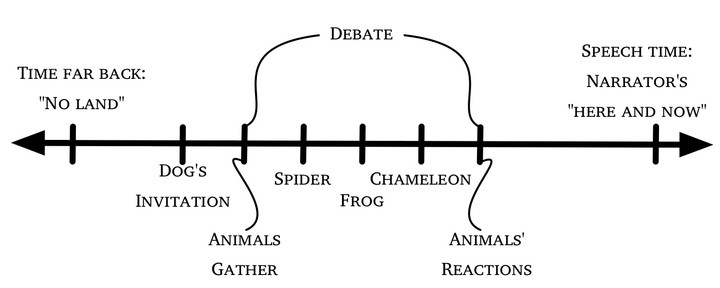Narrative uses of the U̱t‑Maꞌin (Kainji) Bare Verb form

Abstract
In U̱t‑Maꞌin (Benue‑Congo, Kainji), the temporal interpretation of a Bare Verb stem is based on the discourse context established by something other than the verb form itself. Contexts in which this verb form occurs vary. Adverbials and overt verbal morphology on other verbs are among the devices used to establish the conceptual/mental space within which each Bare Verb form is understood. Depending on context, tense-aspect interpretations of the Bare Verb may cover a range of notions, including ‘past’, ‘present’, and ‘habitual’. Once a conceptual space has been established, the Bare Verb can be used to express sequential main events; but its use is not limited to this function.
Citable as
Paterson, Rebecca D. 2015. Narrative uses of the U̱t‑Maꞌin (Kainji) Bare Verb form. In Doris L. Payne and Shahar Shirtz (eds.), Beyond aspect: the expression of discourse functions in African languages (Typological Studies in Language 109), 219–248. Amsterdam: John Benjamins Publishing Company. doi: 10.1075/tsl.109.08pat
Comments: The content of this publication was first presented at SLE 2013.
Categories:
Subject Languages:
Countries:
Content Mediums:
Organizations: